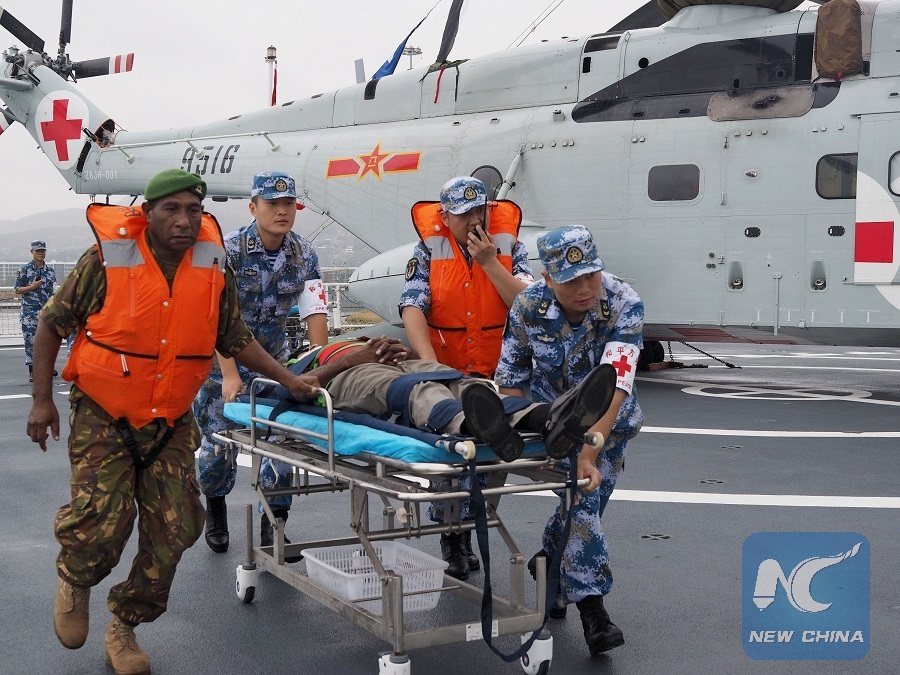
Photo taken on July 17, 2018 shows a joint emergency rescue drill between the medical staff of Chinese naval hospital ship Ark Peace and their military and civilian counterparts of Papua New Guinea, in the Oceanian country's capital Port Moresby. (Xinhua/Jiang Shan)
PORT MORESBY, July 18 (Xinhua) -- The ship's crew immediately rolled out the emergency medical rescue plan after being alerted. Its helicopter on board was deployed soon after, carrying four members to perform life-saving procedures including hemostasis and bandaging to stabilize the injured at the scene.
"There is massive hemorrhage with severe shock. Surgery must be conducted at once," said Dr. Yan Ronglin, following consultations with his Papua New Guinea counterpart.
From the onsite diagnosis and resuscitation to the evacuation back to the vessel for immediate surgical operations, the medical rescue plan was carried out professionally and effectively to the smallest details and as close to a real emergency as possible.
The scenario on Tuesday morning was part of a joint emergency rescue drill between the medical staff of Chinese naval hospital ship Ark Peace and their military and civilian counterparts of Papua New Guinea, in the Oceanian country's capital Port Moresby.
The drill, the first major simulation of its kind involving about 100 people, will benefit Papua New Guinea and enhance its emergency medical rescue capabilities as it looks to host the Asia-Pacific Economic Cooperation (APEC) summit in November, said Luo Dapeng, the World Health Organization representative in Papua New Guinea.
Nearly 40 people from seven Papua New Guinea government departments and agencies including the health and defense sectors also observed the drill, participated in exchanges and viewed technical demonstrations on site.
"I am deeply impressed with this joint drill because the medical staff are from both sides and the simulation is very realistic," said PNG Health Secretary Pascoe Kase.
"We can benefit a lot from participation and exchange," said Dr. Mano Mao, from a local hospital. Mao lauded the emergency response capabilities of the Chinese hospital ship's staff, expressing the hope that the medical exchange and cooperation can be continuously deepened between two countries.
Following the joint drill, the ship's medical specialists also gave presentations on the organization and implementation of large-scale emergency medical rescues for urban public health incidents. They covered the vessel's mass casualty rescue, treatment nursing capabilities, all of which PNG officials and medical staff highly commended.
"The medical ship has expanded new areas of exchange and the PNG people appreciate the Chinese government and Chinese people for all of this. We look forward to Ark Peace's future visits," said Kase.
The Ark Peace arrived here on July 11, making its first stop of its current Mission Harmony 2018 that has so far provided medical treatment to more than 5,000 patients. The naval hospital will sail to other countries including Vanuatu, Fiji, Venezuela, Grenada and Ecuador as part of its current mission.
Since 2008, the ship has visited 37 countries and provided free medical services for more than 180,000 people.

